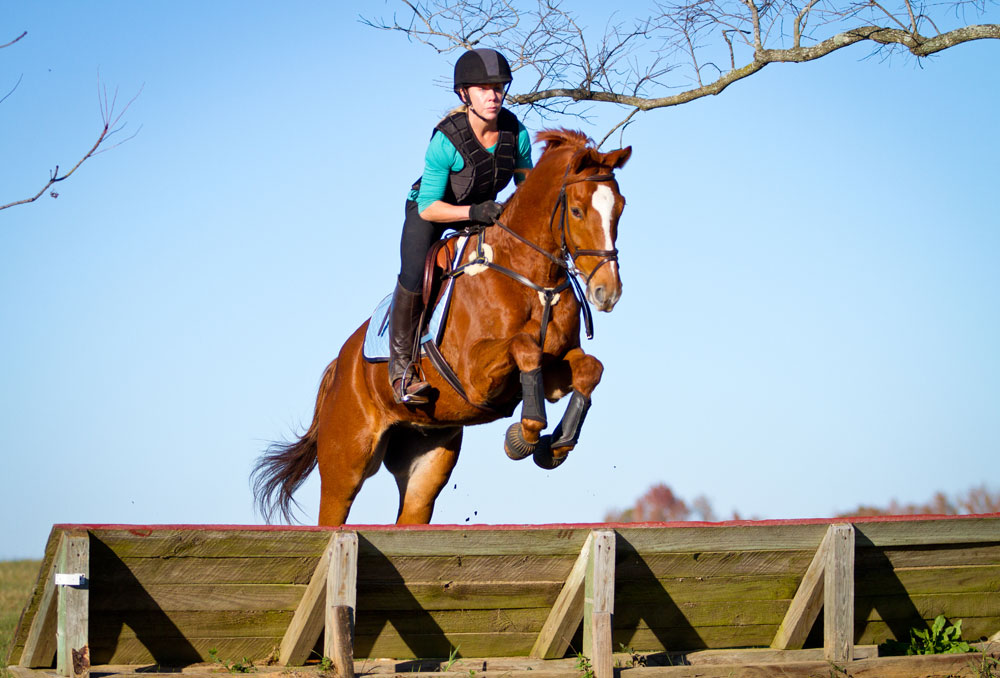Your horse’s lower legs are the most injury-prone component of his conformation. From strained ligaments and pulled tendons to popped splint bones and bruised heels, there’s a nightmarish list of injuries simply one bad step away. Fortunately, there’s an array of protective leg boots available to help your horse. To help you select the best ones for your horse, here’s an overview of the most common types.
Bell Boots

When to use bell boots:
- In deep footing or wet terrain, when horses are more likely to
overreach - Every day for horses with big strides or those making quick,
sharp turns - On rambunctious horses being longed or turned out, in an effort to prevent lost shoes
Fit Tips:
Choose bell boots large enough to encircle your horse’s pastern without chafing, and long enough to cover your horse’s entire heel. In back, the bottom of the bell boot should end just above the outer edge of your horse’s shoe.
Handy Hint:
Keep the Velcro straps clean and dry or they’ll lose their stickability. Pull-on bell boots are a more reliable option, but they must be inverted and stretched over your horse’s hoof.
Splint Boots
Splint boots have adjustable straps on the outside of the leg and a reinforced, cushioned pad that covers the inside of the cannon bone. They can prevent cuts, lumps and tiny fractures of the splint bone that may occur when a horse inadvertently strikes the inside of its leg with an errant hoof.
- Economical splint boots are cost-effective insurance against common injuries
- Easy on/easy off makes them practical for everyday use
- Commonly used for longeing, round-pen work and turnouts
Fit Tips:
Be sure the strike pad is aligned with the inside of the front leg so that it covers the cannon bone and fetlock. Then tighten the straps just enough to hold the boot in place. Splint boots that are too tight can bind against the underlying soft tissue, causing abrasions and swelling.
Handy Hint:
It’s simple to figure out which boot goes on which leg: the tail end of the straps should always point toward the tail of the horse. This ensures that any pressure created by tightening the straps goes across the front of the cannon bone rather than against the fragile tendon at the back of the leg.

All-Purpose Boots
Also referred to as “galloping boots,” these are go-to accessories for a variety of sport horses. The design goes beyond the bare-bones basics of splint boots: The protective pad covers most of the horse’s cannon bone, along with the inside of the fetlock. Moreover, the strike pad is often a resilient plastic.
- A more durable, user-friendly alternative to polo wraps
- Typically made with materials that don’t absorb water, making these a popular choice for trail riding and cross-country jumping
- Available with fleece linings for no-rub protection during advanced flatwork like dressage
Fit Tips:
Hind boots should be slightly larger and longer than those worn on the front legs.
Handy Hint:
Inspect all-purpose boots regularly, especially after rigorous use. Hand wash and air-dry as needed.

Sport Boots
These boots protect your horse’s lower leg from just below the knee to the base of the fetlock joint. The hallmark is an ergonomically designed strap that “slings” under the fetlock.
- Made with durable yet stretchy material, such as neoprene, and several Velcro straps
- Provides protection to the entire lower leg
- Popular choice for western sports such as reining, barrel racing and extreme trail riding
Fit Tips:
Read the manufacturer’s sizing chart carefully. Sport boots must fit snugly. If you discover sand or grit when you remove them, they’re too loose. Yet if applied too tightly, they can create painful pressure points.
Handy Hint:
Due to the slight nap of the fabric, burrs and stickers can accumulate during a trail ride. To make them easier to remove, spray coat polish or tail detangler on the exterior of the boots before you head out.

Open-Front Boots
Specifically created for jumping, open-front boots are worn on the horse’s front legs. A protective shell cradles the back of the leg while the front of the leg is left exposed, except for the straps that hold the boot in place. These boots shield tendons, ligaments and fetlocks from being struck by a hind hoof as the horse negotiates a challenging course.
- The open front allows the horse to feel any jump poles he might rub
- Often combined with a pair of hind ankle boots
- Open front boots are generally allowed in jumper, hunt-seat equitation and medal competitions
Fit Tips:
You should be able to slide one finger between the strap and the front of your horse’s leg. If the straps leave impressions when the boots are removed, then they are probably too tight. Be sure the back of the boot doesn’t interfere with the bending of the knee joint.
When using any type of protective boots, always apply a clean boot to a clean leg. Check fit and look for sensitivity to certain materials that could cause irritation. All protective boots should be removed promptly as soon as a horse’s work is finished.
This article originally appeared in the May 2018 issue of Horse Illustrated magazine. Click here to subscribe!
Further reading:
Leg Bandages-Bandaging Your Horse’s Legs
Durability of Disposable Overboots Under Simulated Field Conditions





